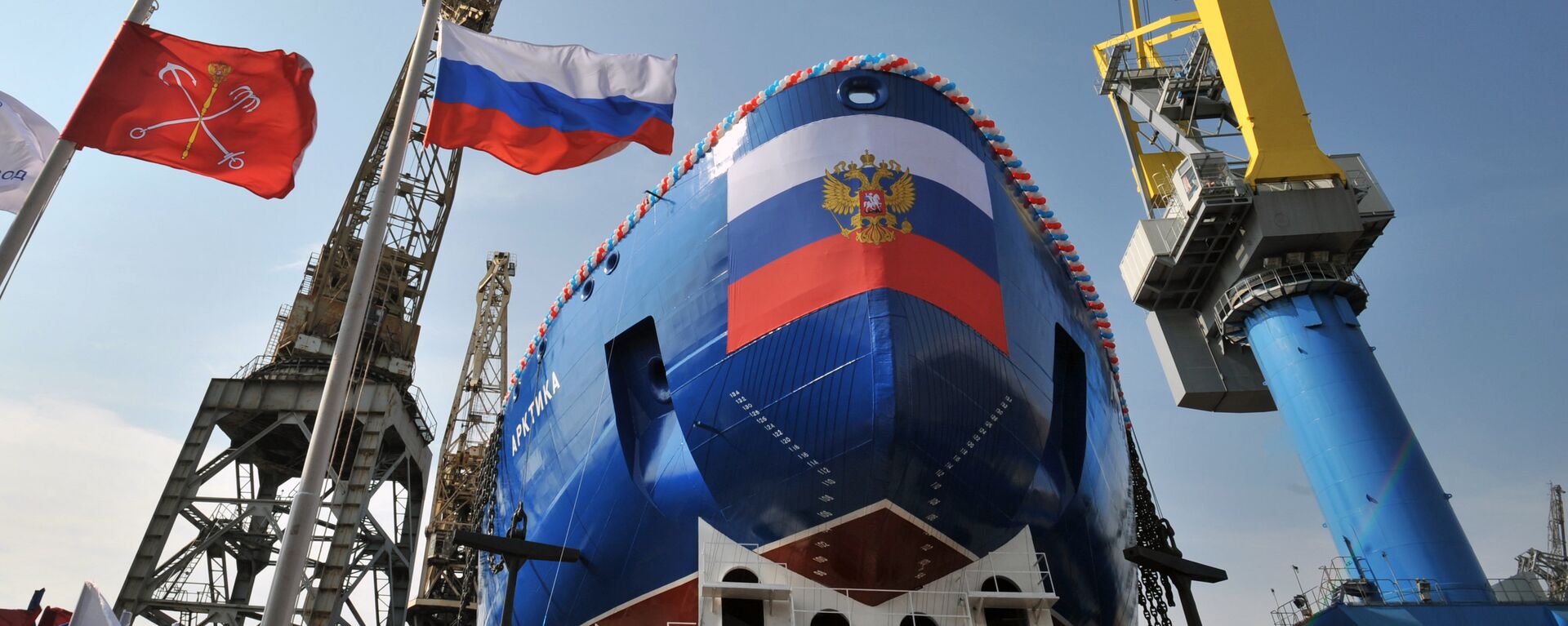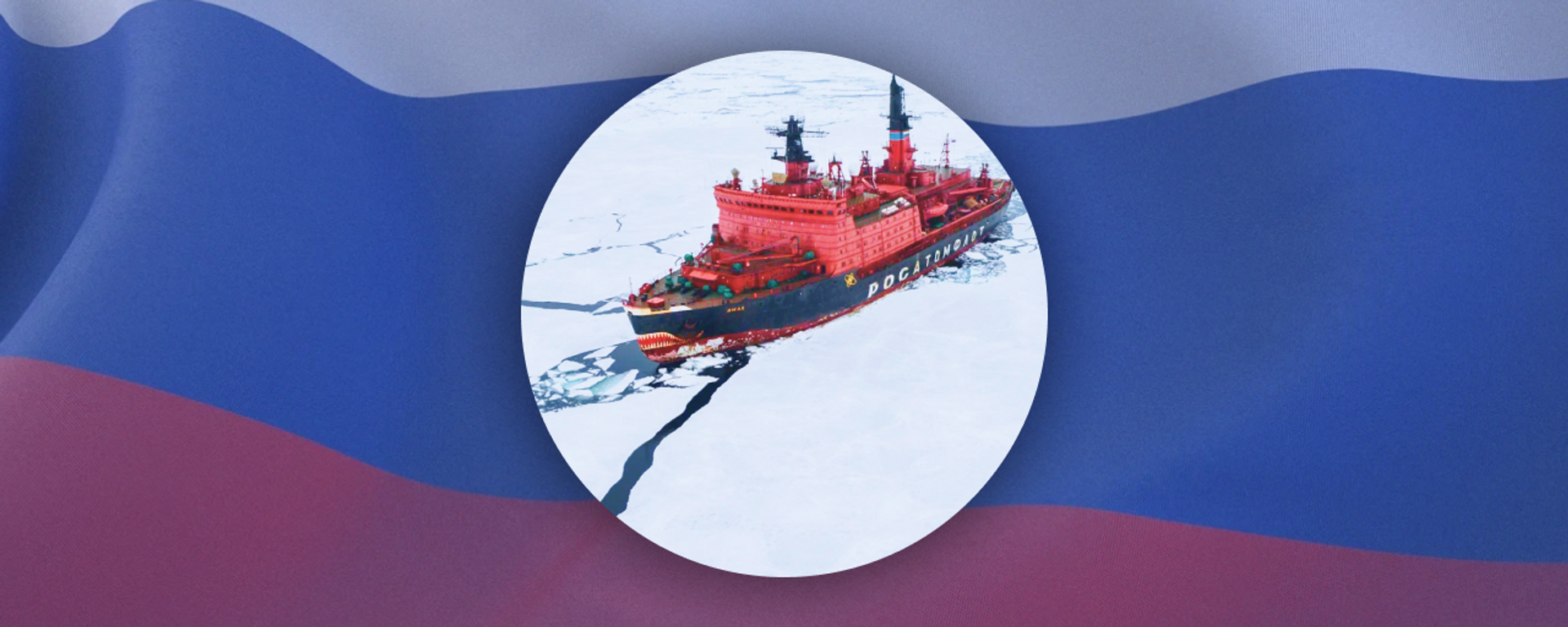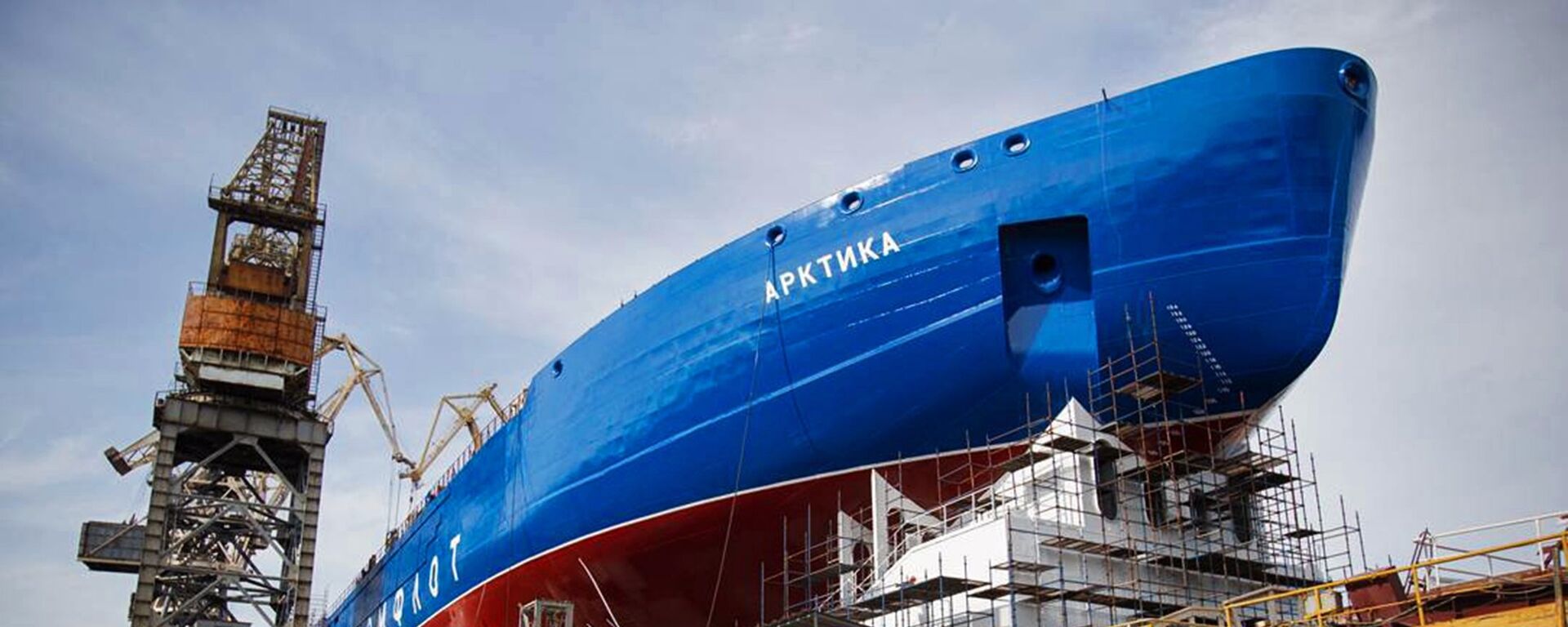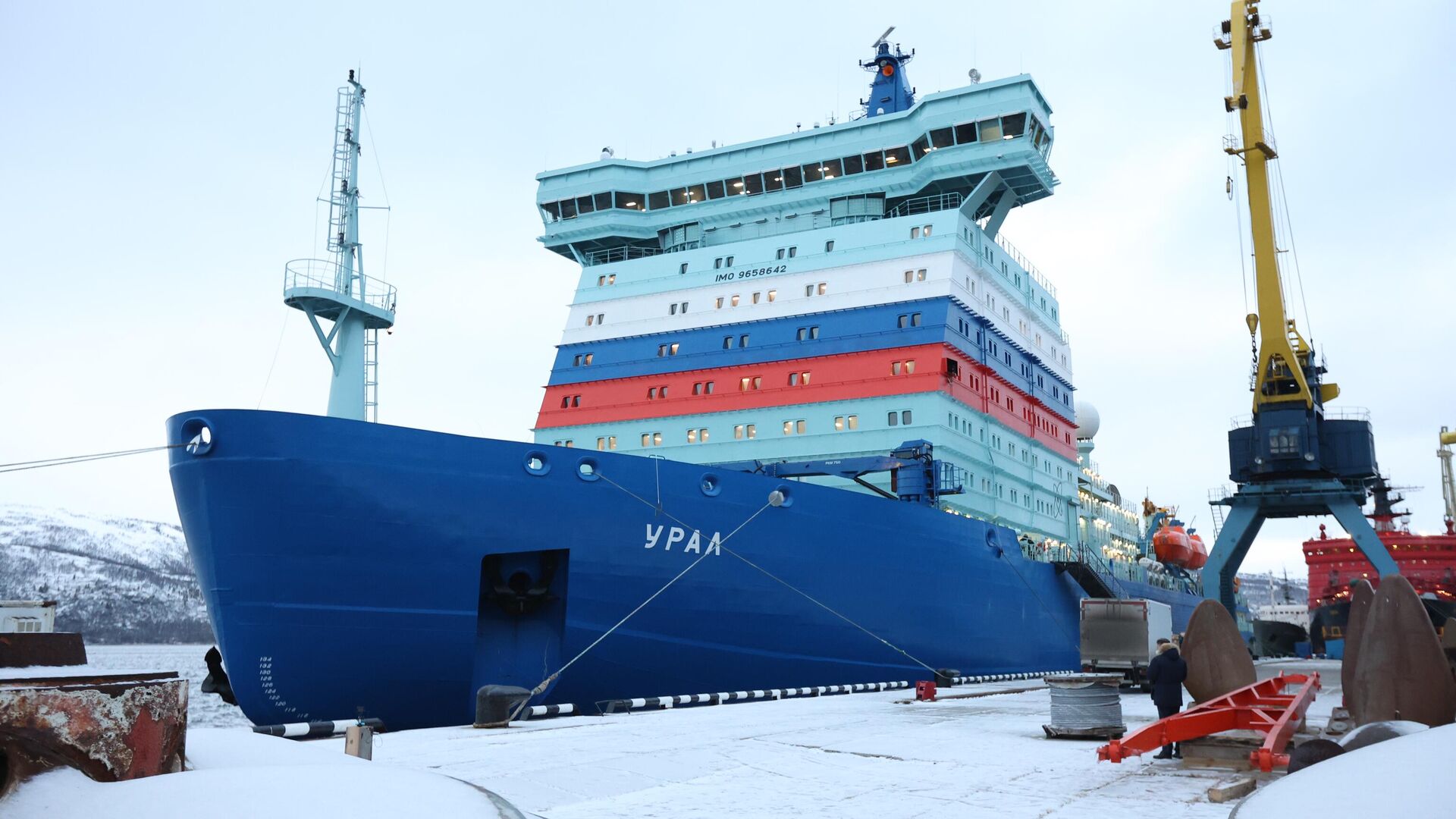https://sputnikglobe.com/20240317/on-thin-ice-us-falling-behind-russia-in-mobility-in-arctic-region-1117374753.html
On Thin Ice: US Falling Behind Russia in Mobility in Arctic Region
On Thin Ice: US Falling Behind Russia in Mobility in Arctic Region
Sputnik International
A yawning gap has opened up between Russia and the United States’ capability to operate north of the Arctic Circle.
2024-03-17T00:53+0000
2024-03-17T00:53+0000
2024-03-17T00:53+0000
analysis
icebreaker
arctic circle
russia
arctic
arktika
sibir
uscgc healy
us
us coast guard
https://cdn1.img.sputnikglobe.com/img/07e8/03/11/1117374910_0:160:3072:1888_1920x0_80_0_0_d9734f5786216a8603200b78b690c1c7.jpg
As the United States’ armed forces restructure to wage large-scale combat against adversaries like Russia and China, US lawmakers are pressing for renewed attention to an often-overlooked region of the world.Air Force General Gregory Guillot, who heads up the US armed forces’ Northern Command, warned the United States is falling perilously behind Russia in its number of icebreaker ships required to ensure mobility in frozen waters at northern latitudes.Only one heavy icebreaker ship remains available for the US to use in the Arctic, noted Guillot, while Russia has about 40. Guillot made the revelation at a congressional hearing of the US Committee on Armed Services this week.Focus has shifted to the Arctic as tensions escalate with Russia amid the US-backed Ukraine proxy war. Russia has the longest Arctic coastline of any country in the world, but the United States also shares a significant border with the Arctic Ocean in the state of Alaska.About 2 million Russian citizens live north of the Arctic Circle, and the country has pursued shipping and fishing in the region for centuries. In recent years Russia has expanded its security presence in the Arctic as climate change has led to a melting of sea ice, exposing the country’s northern coastline.Speculation has emerged the Arctic could represent a major theater of war in future conflicts. But the US would need to significantly expand its fleet of icebreaker ships to compete in the frigid region.Icebreaker ships are designed with a special reinforced shape and increased power to enable them to pierce through polar sea ice, opening up routes for more traditional vessels. The US’ lone heavy icebreaker ship, the Coast Guard’s 13,000-ton Polar Star, was commissioned nearly 50 years ago.The Coast Guard relies on the Polar Star and the USCGC Healy, a medium icebreaker, to open up routes in the Arctic. The Polar Star’s sister ship, dubbed the Polar Sea, has been out of commission since 2010 due to the failure of five of its six diesel engines.Meanwhile, Russia operates nearly a dozen heavy nuclear-powered icebreaker ships. Russia is so far the only country to operate nuclear-powered icebreakers. The Arktika and Sibir, which both run on nuclear power, are classified as the most powerful icebreaker ships in the world which ensure the safety of navigation in the Russian sector of the Arctic Ocean and along the Northern Sea Route.The Northern Sea Route falls inside Russia's exclusive economic zone and is set to factor into Russia's economic plans in the future. The Northern Sea Route enables shipments to reach their destination quicker than if they traveled through the Suez Canal Route.The US Coast Guard has requested increased funds to focus on the Arctic region for over 20 years but Congressional action has been repeatedly delayed.Although Western countries feared an invasion by the Soviet Union for decades during the Cold War, it was actually the United States that landed troops on Russian soil. The American Expeditionary Force, North Russia, popularly known as the Polar Bear Expedition, sent thousands of US Army soldiers to the northern Russian city of Arkhangelsk to fight the Red Army in 1918. Troops were also sent to Vladivostok as part of the Siberian intervention.Allied forces remained in Russia to offer support to the White Army until its collapse in 1925.
https://sputnikglobe.com/20231203/atomic-might-russia-toasts-nuclear-powered-icebreaker-fleet-1115358750.html
https://sputnikglobe.com/20231203/russias-one-of-a-kind-nuclear-icebreaker-fleet-in-numbers-1115363268.html
https://sputnikglobe.com/20220904/russia-to-build-over-150-new-ships-for-arctic-fleet-including-12-icebreakers-1100360255.html
arctic circle
russia
arctic
Sputnik International
feedback@sputniknews.com
+74956456601
MIA „Rossiya Segodnya“
2024
John Miles
https://cdn1.img.sputnikglobe.com/img/07e8/01/19/1116388787_0:0:1316:1316_100x100_80_0_0_77e70d36afd983012b1c5d38ddb84156.jpg
John Miles
https://cdn1.img.sputnikglobe.com/img/07e8/01/19/1116388787_0:0:1316:1316_100x100_80_0_0_77e70d36afd983012b1c5d38ddb84156.jpg
News
en_EN
Sputnik International
feedback@sputniknews.com
+74956456601
MIA „Rossiya Segodnya“
Sputnik International
feedback@sputniknews.com
+74956456601
MIA „Rossiya Segodnya“
John Miles
https://cdn1.img.sputnikglobe.com/img/07e8/01/19/1116388787_0:0:1316:1316_100x100_80_0_0_77e70d36afd983012b1c5d38ddb84156.jpg
russian nuclear-powered icebreaker, icebreaker ural, russian icebreaker, nuclear power, nuclear icebreaker, atomic icebreaker, russian ships, russian icebreaker, atomic ship, nuclear ship, nuclear fleet, atomic fleet, us ships, us fleet, us nave, us coast guard, us alaska, american arctic
russian nuclear-powered icebreaker, icebreaker ural, russian icebreaker, nuclear power, nuclear icebreaker, atomic icebreaker, russian ships, russian icebreaker, atomic ship, nuclear ship, nuclear fleet, atomic fleet, us ships, us fleet, us nave, us coast guard, us alaska, american arctic
On Thin Ice: US Falling Behind Russia in Mobility in Arctic Region
A yawning gap has opened up between Russia and the United States’ capability to operate north of the Arctic Circle.
As the United States’ armed forces
restructure to wage large-scale combat against adversaries like Russia and
China, US lawmakers are pressing for renewed attention to an often-overlooked region of the world.
Air Force General Gregory Guillot, who heads up the US armed forces’ Northern Command,
warned the United States is falling perilously behind Russia in its number of icebreaker ships required to ensure mobility in frozen waters at northern latitudes.
Only one heavy icebreaker ship remains available for the US to use in the Arctic, noted Guillot, while Russia has about 40. Guillot made the revelation at a congressional hearing of the US Committee on Armed Services this week.
“We do appreciate that the Coast Guard is procuring more icebreakers, but even with those, we will be severely outnumbered,” said Guillot. “That does limit our freedom of maneuver in that region.”

3 December 2023, 17:17 GMT
Focus has shifted to the Arctic as tensions escalate with Russia amid the US-backed Ukraine proxy war. Russia has the longest Arctic coastline of any country in the world, but the United States also shares a significant border with the Arctic Ocean in the state of Alaska.
About 2 million Russian citizens live north of the Arctic Circle, and the country has pursued shipping and fishing in the region for centuries. In recent years Russia has expanded its security presence in the Arctic as climate change has led to a melting of sea ice, exposing the country’s northern coastline.
Speculation has emerged the Arctic could represent a major theater of war in future conflicts. But the US would need to significantly expand its fleet of icebreaker ships to compete in the frigid region.
“We need to make sure that we are trying to close a very very significant icebreaker gap,” said Alaska Senator Dan Sullivan when the issue came to the attention of US lawmakers last fall. “Even China's icebreaker capacity is on pace to surpass ours in 2025, and they are not even an Arctic nation.”

3 December 2023, 18:27 GMT
Icebreaker ships are designed with a special reinforced shape and increased power to enable them to pierce through polar sea ice, opening up routes for more traditional vessels. The US’ lone heavy icebreaker ship, the Coast Guard’s 13,000-ton Polar Star, was commissioned nearly 50 years ago.
The Coast Guard relies on the Polar Star and the USCGC Healy, a medium icebreaker, to open up routes in the Arctic. The Polar Star’s sister ship, dubbed the Polar Sea, has been out of commission since 2010 due to the failure of five of its six diesel engines.
Meanwhile, Russia operates nearly a dozen heavy nuclear-powered icebreaker ships. Russia is so far the only country to operate nuclear-powered icebreakers. The Arktika and Sibir, which both run on nuclear power, are classified as the most powerful icebreaker ships in the world which ensure the safety of navigation in the Russian sector of the Arctic Ocean and along the Northern Sea Route.
The Northern Sea Route falls inside Russia's exclusive economic zone and is set to factor into Russia's economic plans in the future. The Northern Sea Route enables shipments to reach their destination quicker than if they traveled through the Suez Canal Route.

4 September 2022, 13:58 GMT
The US Coast Guard has requested increased funds to focus on the Arctic region for over 20 years but Congressional action has been repeatedly delayed.
Although Western countries feared an invasion by the Soviet Union for decades during the Cold War, it was actually the United States that landed troops on Russian soil. The American Expeditionary Force, North Russia, popularly known as the Polar Bear Expedition, sent thousands of US Army soldiers to the northern Russian city of Arkhangelsk to fight the Red Army in 1918. Troops were also sent to Vladivostok as part of the Siberian intervention.
Allied forces remained in Russia to offer support to the White Army until its collapse in 1925.






